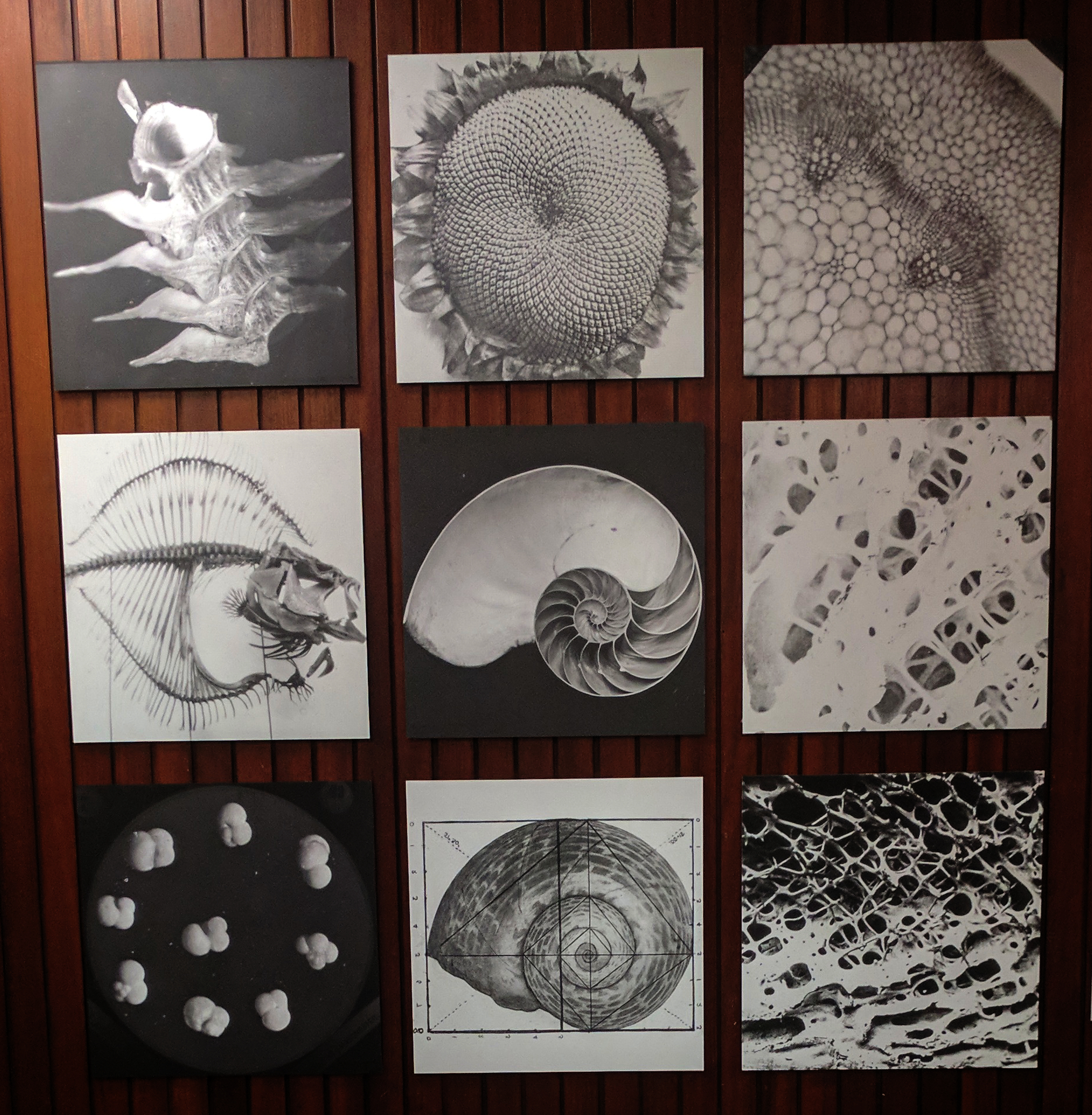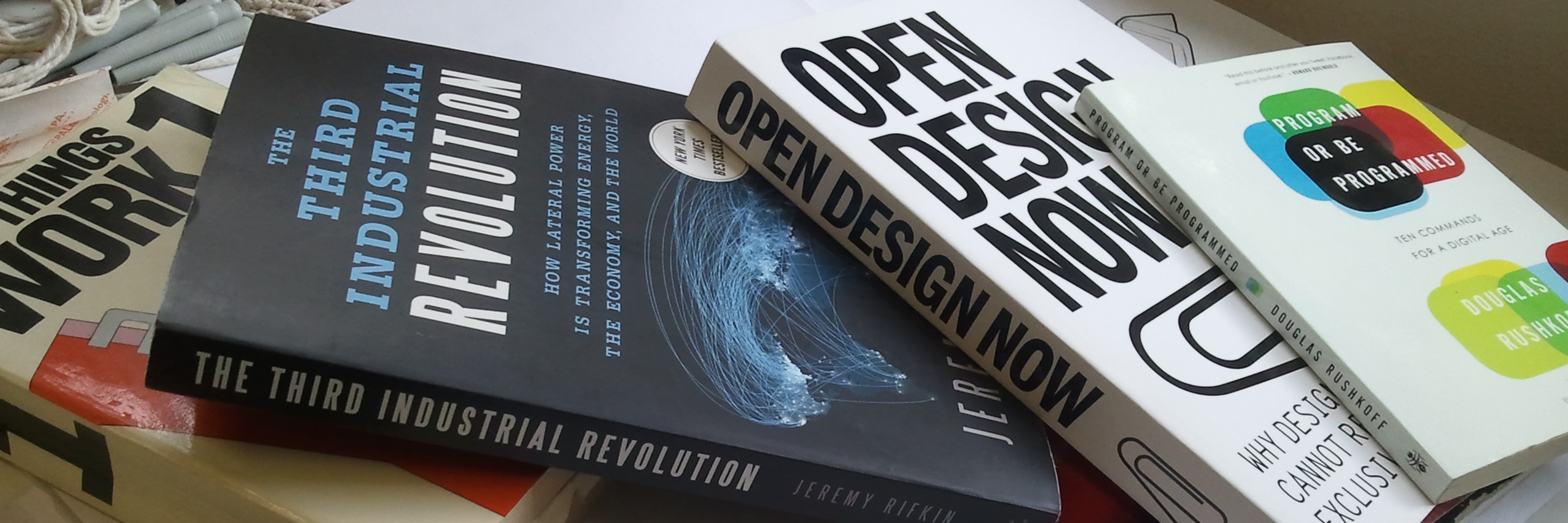Is there a sustainable business model which allows the development of innovative open source products?
Patents and the traditional product development model
The intent of the patent system is to incentivise innovation and promote the sharing of the results of that development at the end of the patent’s life. The granting of a patent by the state offers a time limited monopoly to the inventor to sell the product of that invention, in exchange for this monopoly , the company agrees to disclose the details of the invention. The basic principle of the patent system is a fair proposal, if you have put in effort and risk to developing something, it is then reasonable that you receive compensation for this. The state intervenes and creates a time-limited monopoly on the behalf of the inventor to protect their investment of time and incentivise others to invest in innovative development. The creation of a monopoly is something which first principle market capitalism abhors, and is not taken lightly, it can introduce market distortions which pull a given market far from being the “perfect market”. The benefit to society in this case comes from the development of a body of published patents which can be studied and developed upon or licensed by others. Previous to the development of patents, specialised technical knowledge was jealously kept within the ranks of mediaeval guilds, with the real danger of losing knowledge or skills if it was not transmitted to the next generation.
This first principles approach does however make certain assumptions; that the inventor works alone and has full credit for the invention, that monetary reward is the principal motivation for innovation, and that the time period granted of the monopoly will not distort the marketplace significantly or block further innovation and efficiencies. It also assumes that patents are a useful body of knowledge that promote further learning, though often they may be written as much to obfuscate as to clarify.
This defence of the patent system here, Imagining a ‘World Without Patents’… makes the fundamental commercial point that why would a venture capitalist choose to invest if there was no way of recouping that investment? The author concludes that there would be no other satisfactory way to fund innovation.
This is the key reason that new technology or product development start-ups will obtain or be advised to obtain patents. A start-up or SME will often look for funding from a venture capitalist in exchange for equity in their business, it is at this stage that they will want to see formal IP assets owned by the company. This contrasts with the case of crowdfunding where part of the value to the crowd in funding you is the value of the knowledge you are adding back to the commons. In effect it is the community that is taking the risk and investing in the development of the product or system.
With venture funding, how much control needs to be given to a VC to continue a development project and how much profit is left for the original team? For the concept originators does their own return end up being much like that of an employee in a larger organisation, does the risk versus reward balance still stack up? Will additional restrictions be placed on them by the external investor? It is also worth noting that through the investment and funding of innovation there is an inherent need for a return on investment for the VCs. As the world starts to look for ways to respond to climate change and realise a “circular economy” that values resilience in our economic and resource systems over growth for growth’s sake, should we question the fact that any product manufactured has an inherent pressure on it from its inception to create growth at any cost?
What then is the classic inventor success story? In his book “Makers”, Chris Anderson relates the story of his grandfather, a true maker and inventor, and the path he took to bringing one such invention to market. It is striking how little has changed in this process since the 1940s when he takes out his patent “#2311108 – sequential operation of service valves (1943)”. What is described here is effectively the same understanding of the product development process that Universities and economic development agencies such as Scottish Enterprise consider as the orthodoxy for generating new products. An inventor comes up with a new idea to bring to the market, gets a patent and licences it to a manufacturer for a royalty. However, what the author is highlighting to us here is that his grandfather’s success was very much a rare thing even during the boom years of consumer products in the post war period up to the 70s. He received royalties but these were a fraction of the earnings of the manufacturer’s, he had a day job as an engineer, the royalties making his life comfortable but not by any means a millionaire ($300,000 in royalties over a 20 year period).
This orthodox process is rather like a band starting out in the 60s, trying to clinch the big record deal, and signing up to a big label/corporation, sometimes with a less than favourable contract. A band may quickly lose control of their own image and rights and become manipulated by a record company to serve corporate interests.
“As Marx observed, power belongs to those who control the means of production… To get to market, he had to interest a manufacturer in licensing his innovation. And that is not only hard but requires the inventor to lose control of his or her invention. The owners of the means of production got to decide what is produced.”
P5, Makers – Chris Anderson
Anderson argues that the problem with engineers and inventors such as his grandfather was that they were not entrepreneurs. He also goes on to cite the cases of industrial revolution figures such as Brunel and James Watt, that they were either already wealthy or under the patronage of wealthy men, allowing them the time and resources to develop. By and large though I would argue that this is still very much the case, large corporations have centralised R&D hubs with healthy budgets to explore new advances. Even in the case of one of the most vocal advocates for the maker movement, Neil Gershenfeld, working within MIT means that there are few commercial constraints on development budgets.
Anderson finishes offering us a vision of how his grandfather would approach the development of his product in the current age of makers and collaboration.
“Rather than a solo obsession, he likely would have been part of a community of equally obsessed people from around the world. Rather than inventing everything from scratch, he would have built on the work of others, compressing decades of work into months. Rather than patenting, he might have published his designs online, like other members of his community.
When it came time to make more than a handful of his designs, Hauser wouldn’t have begged some manufacturer to license his ideas, he would have done it himself. He would have uploaded his design files to companies that could make anything from tens to tens of thousands of units for him, even drop-shipping them direct to customers. Because his design files were digital, robotic machine tools could make them, saving 90 percent or more in tooling costs. Rather than searching for distributors, he would have set up his own e-commerce website, and customers would have come to him via Google searches, not salesmen.”
There are a few points here that are certainly contentious and controversial when viewed from the mainstream of product development, firstly stating that he would no longer apply for a patent, without backing up what his business case would be. Whilst it is true that it is possible to scale production processes, it is not quite as simple as described here. There will always be compromises to be made in production scale versus capital costs, not everything can currently be machined and assembled by automated machine tools. At scale a tool will always be more efficient at a certain point in cost per piece and time. Now that tool may be machined by a computer controlled robotic arm, but there is a real and significant cost attached to that. This approach suggests a dynamic, decentralized approach to innovation that is capable of generating innovations, crucially however its economic viability is unproven.
If we look beyond this particular anecdote, how are patents used and who owns them in reality?
Studies on patent usage and value
The PatVal-EU project which surveyed European inventors published in 2005 gives an interesting overview of the value and ownership of patents in the EU. The headline results from their research are interesting, the vast majority of named inventors, around 90% work for an organisation and the self-employed were less than 8%. The vast majority of this 90% were working for large private sector companies. It is interesting to look at the surveyed motivations and remunerations for inventors, personal and social satisfaction consistently rated above career advancement and monetary reward. This is probably just as well as the survey also shows that only around 40% of inventors received monetary compensation, and of those cases 90% were transitory arrangements rather than the sort of ongoing royalty payment we popularly imagine to result from a patent. Taken together, the self-employed inventor and the employed inventor who receives a royalty arrangement only add up to around 12% of the total pool of named inventors.
Around 55% of patents have commercial use for an organisation while 13% are licensed, leaving just over a third of patents unused. The monetary value of the patents studied is also heavily skewed, with a small number of patents yielding high economic returns. 46% of patents will each have a value of less than 300,000€ whilst the top 7% of patents have values of 10 million euros or more (up a further order of magnitude to more than 300 million euros). This means that in terms of monetary value the top 4% of patents have around three quarters of the total value of patents in force.
The overall impression that this study gives is one of centralised large corporations dominating the innovation process and the values realised from the resulting patents. The named inventors are largely employees, the study also notes that the vast majority never change job in their career. This picture is quite different from the popular image of the lone inventor or swashbuckling entrepreneur. This is also the image that holds sway in the entrepreneurial incubators springing up all over the world. As an interesting aside this series of articles on Forbes written from a free-market point of view makes the case that the budding entrepreneurs leaving incubators are in fact a new form of labour rather than free-wheeling mavericks.
This discussion is relevant when we think about the ownership and distribution of property and capital in the economy and the balances of power that results from them. The ownership and value of patents reflects discussions such as the now-famous work of Piketty on the distribution of capital and the increasing concentration of capital in fewer and fewer hands. It would likely take a lengthy research project and a work of the gravity of Piketty’s to draw conclusions about patent ownership, but there is at least some correlation between large corporations and patent ownership and wealth.
“The Impact of the Patent System on SMEs ” from 2010 a study published by the Centre for Business Research for the UK’s Intellectual Property Office (IPO) explores similar themes of patent ownership and usage, but from the specific point of view of Small to Medium sized Enterprises (SMEs).
They point out that SMEs may find that the costs associated with patents are relatively higher as compared to a large corporation, and they may struggle to find the capital funding to take advantage of a given innovation and enforce the resulting patent. As a result they find that SMEs will very often use other means to achieve returns on R & D investment, through secrecy, being first to market, using skilled labour or specialist equipment.
“Patents provide the inventor with legal protection but, as public documents, they also reveal to competitors most of the details of any given invention. It is often the case that imitation is still possible without infringing an incumbent innovator’s rights: the nature of the technology might make it possible to „invent around‟ a particular design or technical specification (Mansfield, 1986). From the viewpoint of the inventor, this is a case where secrecy can be a more appropriate means to capture the returns to R&D.”
The report also highlights that the total cost of obtaining and defending a patent is of great concern to SMEs with limited resources.
“litigation rates vary significantly by sector and firm size. SMEs, which tend to have smaller patent portfolios, are more vulnerable to litigation and tend to be sued by, as opposed to sue, larger firms 15 (Lanjouw and Schankerman, 2004, Ball and Kesan 2009, among others). This is probably because of their inferior bargaining power, information asymmetries about the IP process, or the higher marginal value they attach to their patents. That said SMEs may have some bargaining power that can be used to settle disputes with large firms out of court.”
“cost allocation rules need to lower the risk that frivolous litigation is instigated by cash-rich parties against financially less well-off opponents.
This is as true for the European patent and litigation system as it is for national systems, including the UK. On average, the costs of applying for a patent in the European area are between three and five times higher than in the US and Japan. A solution to this, as Harhoff again clearly points out, is not only to reduce costs but also and above all to create a quality-oriented system on the principle that innovation does not need stronger patents but rather an IP system that gives good protection to high quality inventions in a cost-effective manner.”
They conclude that there should be further studies carried out to quantify the costs and benefits of patent protection in order to encourage their adoption by SMEs.
Why is it important that patents are dominated by large corporations and that SMEs and lone inventors find it difficult to enter into this knowledge market? Apart from any discussion of income distribution, this concentration of R & D development means that there is a huge human resource in the wider world outside the large corporations lying unused or under-utilized. If technical innovators are drawn from a very narrow slice of the population and cultures, within a limited remit, surely society is missing out on opportunities and potential solutions?
Open Source Culture & Practices
The growth of Open Source has been disruptive to the software market and through the broad participation in the maker movement, has started to move into the realm of physical designs. Is this an appropriate avenue for the development of mechanical systems and products?
What advantages has open source brought to software development? Open source software has encouraged the adoption and maintenance of open standards over proprietary systems. An active open source project will have a lively community of knowledgeable participants exchanging ideas with each other and passing on knowledge to beginners. The wider community aids development of the core code by fixing bugs in the code, providing a distributed resource that aids the refinement and improvement of the software.
The open source licenses developed for software such as gpl, Apache or MIT are based fundamentally on copyright. Copyright is a natural and automatic right for the author of a written, recorded or visual work, and programming code is covered in its remit. The programmer then has legal protection over his or her own work and can then choose to effectively renounce those rights under these open source or “copyleft” licenses.
As Michel Bauwens of the Peer to Peer Foundation has pointed out however, open source licenses paradoxically lead to greater exploitation in practice by commercial companies. It is possible for IT consultancies to make considerable profits from, for example, the Linux operating system, without any requirement to contribute value back into the commons pool.
This means that the value of the commons provided by free labour is being exploited by private companies and that in turn no-one can make a living by working on these open source projects. If there are no business models to be built around open source then we are not creating new meaningful sustainable jobs by pursuing it. If the only possible reward for involvement in an open source project is kudos, prestige and self-promotion then this approach will always be subordinate to the conventional existing economy, i.e. self-promotion leading to a conventional corporate job.
To this end, Dmytri Kleiner, has proposed the Peer Production License (PPL) whereby free use is granted to non-profits and coop entities, but commercial entities which make no contribution have to pay a license fee. Michel Bauwens of the P2P foundation has termed this an example of a Commons-Based Reciprocity License (CBRL). There are issues here in how this should be enforced and how to define whether an organisation is liable to pay a fee or not, however this proposal does suggest a means to create a self-sustaining commons of knowledge that accepts wider community contributions and at the same time provides for funds to enhance and grow a core team of curators for the project.
Importantly however for the discussion of the application of open source in physical designs, a CBRL would be based on copyright as with creative commons or copyleft style arrangements. This means that a physical design could have the schematics and drawings of a design’s implementation covered by a CBRL but in terms of fundamental principles which would be patentable, the commons could not be protected in this way.
In fact, when we look around at the more popular open source design and open source hardware projects, such as the Ultimaker, the (original)makerbot or reprap, they are all based on expired, existing patents. They do not in general propose new technologies that would be patentable, though interestingly when makerbot was bought out by stratasys, it then filed a patent and released a range of closed-source models to the market. This eventually led to conflict with the original supportive community that had grown around the original open source makerbot. Makerbot were accused by the community of stealing ideas and attempting to patent them, an enclosure of the commons. The community reacted with the hashtag #takerbot on social media.
Ultimaker on the other hand with the release of the Ultimaker 2 released all of the files necessary to make the printer more than 6 months after its initial sale. This “bootstrapping” approach gives them a first to market advantage and thereafter assumes that it will always be cheaper to buy a printer from them than build one from scratch, except for the tiny minority of dedicated experimenters. Ultimaker is an effective demonstration of the successful sale of an open source product which has no IP protection.
As discussed earlier a patent is granted as an exclusive monopoly to an organisation by the authority of individual states and it is hard to see how this could be compatible with an open source mode of working. A patent is granted based on an idea that has not been disclosed in the public domain, a design developed in an open community would by its very nature be disclosed. The territorial nature of patents would also be against the practice of the distributed, global nature of open source communities, if contributors are in China or Brazil and a patent was filed only in the EU, what would be the implications?
One possibility that has some precedent is the creation of open patent pools, whereby organisations who own patents, choose to not charge anyone a license fee on the use of their IP. The most high profile example of this has been Tesla in their opening up of their patent portfolio. Their reasons for this move were revealing, they are trying to sell such a new and disruptive technology that they realise that other companies trying to produce electric vehicles are not the real threat to their business – the vast majority of the car market running on petrol is! In this way they attract competitors into their space who have bought into their platform allowing their own market to grow in step.
“At Tesla, however, we felt compelled to create patents out of concern that the big car companies would copy our technology and then use their massive manufacturing, sales and marketing power to overwhelm Tesla. We couldn’t have been more wrong. The unfortunate reality is the opposite: electric car programs (or programs for any vehicle that doesn’t burn hydrocarbons) at the major manufacturers are small to non-existent, constituting an average of far less than 1% of their total vehicle sales.”
By doing so Elon Musk believes that Tesla motors can achieve its fundamental goal;
Tesla Motors was created to accelerate the advent of sustainable transport
This is an interesting approach where companies become genuinely mission focussed with some becoming explicitly charities or cooperatives. The Mozilla foundation is an example of a non-profit organisation with explicitly social aims which as its core activity develops and manages the Firefox web browser. This gives an example of a core of salaried developers who coordinate and are drawn from a wider community of volunteers in society all contributing to Mozilla’s common goals. Again, though, Mozilla is working with open source software rather than with physical designs and patentable technologies.
Reliance on copyright and copyleft leaves collaboratively produced product innovations back in the paradox highlighted by Michel Bauwens that the more communal the license, the more commercial interests can exploit them without contributing to sustaining the innovation process that generated them. At the moment there seems to be no viable solution to this problem. If an open source project were conducted in secret, it would not be able to leverage the network benefits of the distributed development resource of the online community and would be forced back into the standard model of investment, patent acquisition and defence. Conversely, if a development is carried out on a truly open model with disregard for how patents work, the open community could find its work enclosed at a later date by a proprietary patent as seen with the makerbot community.
Peer to Peer Patents
Inspired by Douglas Rushkoff’s notions about social and legal systems being a form of operating system , I’d like to explore a thought experiment about the operating system we are “running” patents on currently.
To re-iterate a patent establishes ownership of an innovation, is published at a particular moment of time and then provides a monopoly on this innovative inventive step to be used commercially. A patent is valid in a particular geographical territory and requires the authorities of that state to award the monopoly based on a judgement on the uniqueness of the inventive step presented in the patent.
If we compare this with the varying licences based on copyright through to copyleft and the creative commons licences, these begin with copyright being an automatic right (albeit offered varying implementation in local law), the ownership is automatically recognised and then the owner can chose how they wish to dispose of that right, choosing eg a share and share alike creative commons license.
What I would like to explore here is the concept of removing the geographic intermediaries and finding an automatic means to establishing the uniqueness of an innovation and establishing the ownership of it. Networked communication technologies have proved particularly effective in breaking down the need for intermediaries in many industries and walks of life, from politics to hospitality.
Online peer to peer networks have enabled the mass collaboration of open source software development, peer to peer file sharing and crypto-currencies that require no central bank as trusted intermediary. The emergence of crypto-currencies and the block chain allows through their protocols, distributed validated transactions, that no longer need an intermediary(eg a bank) to provide trust and validation.
Collaboration on open source software projects is generally managed through commits to source version control systems which allows multiple contributors to concurrently work on the source code. Software programming has the advantage of being text based in its representation and uses strictly codified languages. This establishes a means of communication between parties and distributed version control systems allow the tracking of changes.
Could a protocol and mark-up language be developed to capture design principles and hence codify a unique representation of an innovation? Functional Design modelling makes use of representations which borrow heavily from Unified Modelling Language (UML) and systems design approaches.
A graph and matrix representation scheme for functional design of mechanical products
This is an active area of research to aid innovation and manage the complexity of the design of products and systems. What if these representations were also used to codify and crystalize a product innovation in the form of a machine readable patent? If such a representation were clear-cut and incontrovertible, potentially the requirement for legal arbitration would be avoided or eliminated. Much in the way that crypto-currencies avoid the need for a central bank to act as an intermediary, a robust protocol and mark-up language could both inherently prove the invention’s novelty, time of submittal to the network and establish its authorship. Much like fiat currencies, patents are territorially based and have a central issuing authority in each geographical location. A peer to peer approach would not require such centralised patent offices if those using the system accept the validity of each new “commit” to the network being a novel principle.
Would this be a more or less fairly distributed market than is the case with the current patent system? It could potentially reduce the cost of publishing and what’s more, defending a patent, to zero in a peer to peer networked context. This kind of scenario would allow both existing commercial activity to continue unhindered but also allow open source communities to exercise rights over design principles and keep them in the commons. In this way a a CBRL model combined with a non-profit foundation could grow a commons resource of true product innovation.
In and of itself it would not change the concentrations of wealth in a very small number of patents, though the careful design of a machine readable graph or UML based representation may limit patent claims from being far too broad or abstract. It may intensify bidding over certain key developments, but with lower cost of entry to the market place it could reduce the domination of the biggest corporate players.
Perhaps this thought experiment may seem too far-fetched, but it would certainly be possible for the open source community(ies) to explore representations and communication of product and hardware systems in such a protocol. Even if it were not to lead to a comprehensive patent-like system, this could be an invaluable tool to promote dissemination of applicable design typologies and solutions allowing their local re-interpretation and application. It could also be used as a “proof of work” to evaluate contributions made by community members and external private entities to an open source project such as being explored in Open Value Networks approaches.
Conclusions
In summary, we have looked at the rationale of patents, who owns them and how they are used. We have looked at open source culture and its origins in programming and basis in copyright. This has developed into recent ideas of CBRL and PPL on how to sustain the commons through licence fees for commercial work whilst allowing free non-commercial use and development.
I have suggested here an approach to create open source peer to peer definitions of design principles which could take the place of patents. This is not to be dogmatic about the adoption of open source practice, but to allow smaller businesses to obtain and defend IP at very low or zero cost whilst also giving space to open source coops to keep their developments in the commons. Alternative business and social models for product development are unlikely to supplant the traditional patent and investment based process, but there must be at least the possibility for these approaches to coexist and new models to be explored.
Fertile areas to explore initially would be perhaps in underserved markets with social goals where there is no business case for R&D costs to be recouped. One such field of work is in open source drug discovery. It is worth noting that minority tropical diseases affecting many “low value” patients can become a western killer overnight take for example the case of Chagas disease considered in the above link as a neglected disease. These neglected diseases, however know no boundaries and are now making significant inroads into the southern states of the US.
So using an open source, commons based approach can be a means to protect our own future interests and well-being in the west. This will become increasingly important as we deal with unexpected challenges in many facets of life due to climate change. How can we best maintain and improve people’s standard of living as our environment changes? It strikes me as unlikely that proprietary business models such as the classic “printer cartridge” model will help us to achieve this.
Perhaps the use of crowdfunding with mutual ownership models could offer a way out of the pursuit of infinite growth. The motivations of crowdfunders are different to Venture Capitalists, they want to fund also for social, qualitative reasons and not simple return on investment, but more for the “use value” of having the product or service, or indeed documented knowledge (such as Wikipedia).
In conclusion I would be interested in seeing legislators helping to create a supportive environment for social enterprises and cooperatives to develop innovative products and services using an open source approach, to aid patent pooling and the legal framework for licenses such as the “Community Based Reciprocal Licence” to allow this commons knowledge to flourish. For my own part, as a designer I am curious to explore a codified mark-up language for patentable inventions that would allow peer to peer behaviours to develop in the exchange of and attribution of design principles and patterns. I see this as being a useful tool to manage an open source design project, gauge participation and encourage further derived innovations.







Leave A Comment